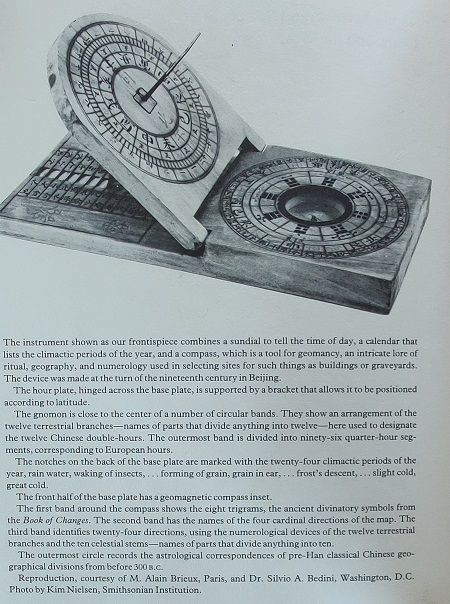Another use of the magic square in art was in the form of geometric symbolism rather than an explicit square of numbers. This was a subtle representation as the cognitive use of the magic square was not intended for the common person.
The magic square was used in art in the form of the quincunx, known as sacred geometry, a pattern that was symbolic of a universal cosmology.
This universal cosmology does not have a known origin. The early Chinese of more than three thousand years ago developed the Luo Shu into a model that represented their cosmology, as documented in the Yi Jing.
The Luo Shu represented a perfect balance of Yin and Yang as the even numbers symbolized female and yin energy, the earth, and the four intermediate directions. The number four symbolized the four elements: air, water, earth, and fire. The four quadrants of the magic square symbolized the earth. The “square” earth was a reference to measuring the earth with a carpenter’s square and the Pythagorean Theorem.
The cross of odd numbers symbolized male and yang energy, Heaven, and the four cardinal directions. The circular nature of Heaven encapsulates the earth and is represented by the compass and circle. In temple and church design this concept is illustrated as the circular dome (omphalos) is placed over a square base.
The Center
The Center
The center is the most important concept in Chinese cosmology; also known as the axis mundi (Latin). The center number five is surrounded by four odd and four even numbers for a perfect balance. In the ground plan of early church design the axis mundi symbolized the convergence of Heaven, earth, the transcended human, and corresponded to the central dome and altar (and sometimes a tomb).
The odd and even numbers (sans the number five) are in a quincuncial relationship with the number five, i.e., the center. This quincunx of numbers can be translated into a geometric representation using the square and circle:
Detail of the Ambassadors Depart (c. 1498) by Vittore Carapaccio
This sacred geometrical pattern is modeled after the Luo Shu and represents a cosmology that explains the universe.
This pattern is known as the quincunx and was used to identify places or things of political or religious importance.
The Cosmology of the Quincunx: The Circle and Square
The quincunx was the most popular ground plan for churches in the middle Byzantine era. The quincunx pattern has been commonly used on the covers of the most sacred books, both in church art and for real. And the quincunx was a favorite pattern of the Cosmati pavements in dozens of the oldest Italian churches. The pattern was used with intention to mark the most revered places or items of religious or political significance because the quincunx encompassed all the elements that could explain the universe.
The quincunx church
"The center symbolizes the beginning, the origin, the starting point, the pure being, the absolute, the transcendent, in three dimensions, the center corresponds to the axis, which unites a point with the zenith (the North Star), indicating verticality. The circle - in space, the sphere - represents the infinite, transcendent, and complete, in sum, the divine, god. The square – in space, the cube – is the symbol of the earth, connected in its order to the four cardinal points. The cross marks the four points of the compass; it stems from joining the center with each one of the points, establishing the orientation of the point in space and in time. The cross is the mediating symbol that connects heaven and earth."Paloma Pajares Ayuela, Cosmatesque Ornament (2001)



























